Gustav Becker Ratchet Spring
Lets start with a simple ratchet spring for a Gustav Becker clock. In layman's terms, a ratchet is a gear that can only rotate in one direction. In it's simplest form it works with a click that allows it to rotate in one direction but not in the opposite direction. This is achieved by having slanting teeth on the ratchet gear and the click engages with them. For this to work, the click needs to be spring loaded.
As you will see below, the time side (that's the middle one in the photo below) ratchet spring was just a bit of wire that had been bent and screwed in. A disater waiting to happen but luckily for the customer, the spring slipped off when he tried to wind it and a calamity was averted.
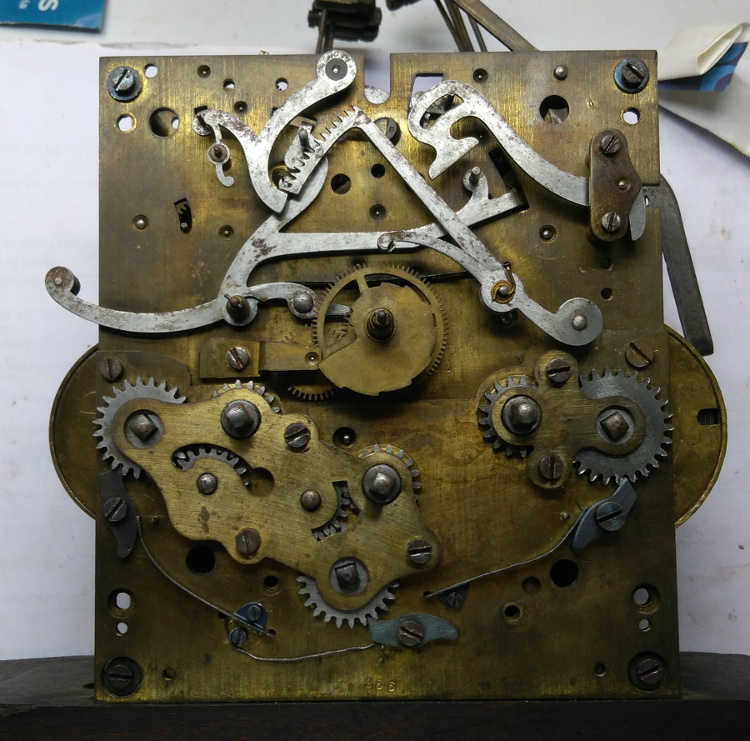
Here's a closer look at the "spring".
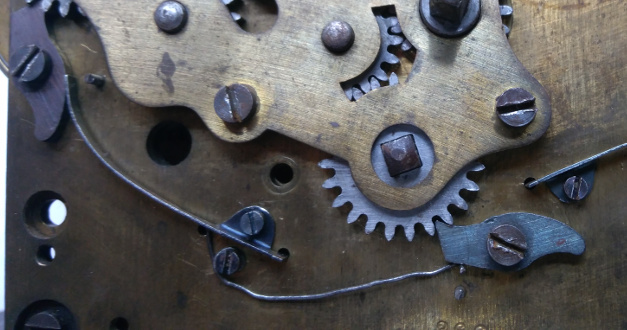
I started with a piece spring stock of the correct thickness and annealed it. Then I used one of the other ratchet springs to mark out the dimensions. Using the technique of template grinding as shown by W O Smith in his book "21st Century Watchmaking" the spring stock was brought to the correct shape and dimensions. As you can see, the spring also has a bend. This is where I broke the first few attempts at making the spring.
Here are the fabricated springs. The spring on the extreme right is the final version. The others to the left are te faied attempts. In short, the spring stock is annealed, ground, shaped, hardened and then tempered to return it to it's original springy state.
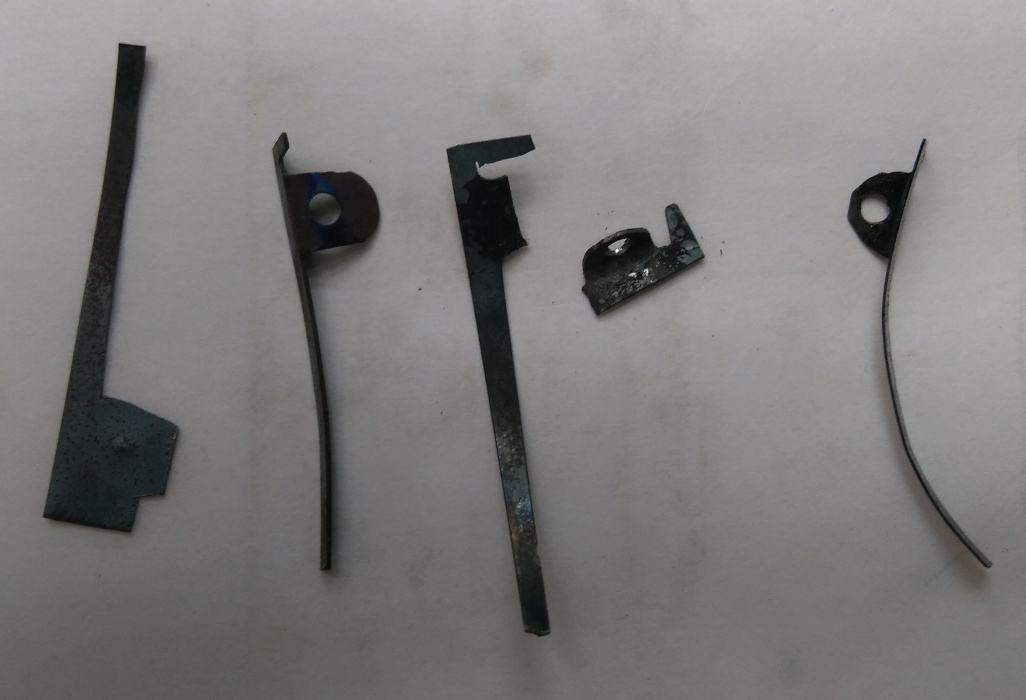
Here's a closer look at the finished spring. These photos aren't the best but I'm sure you get the gist.
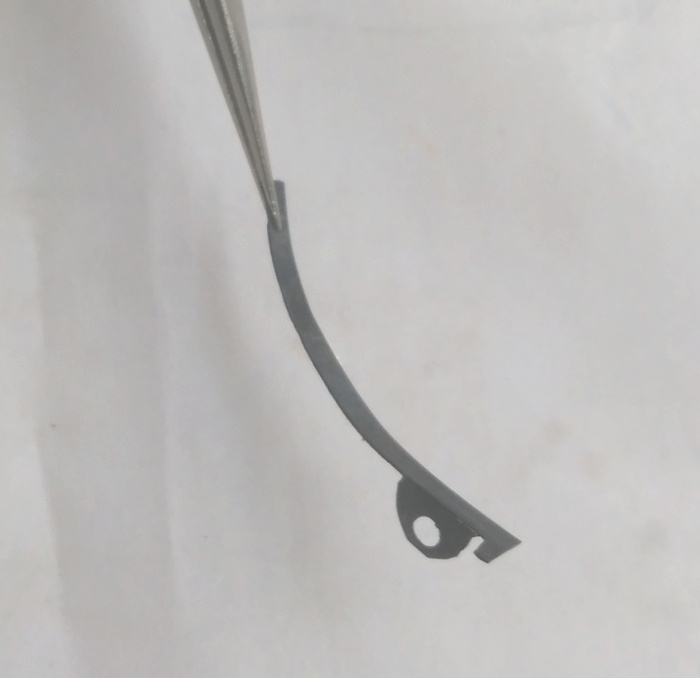
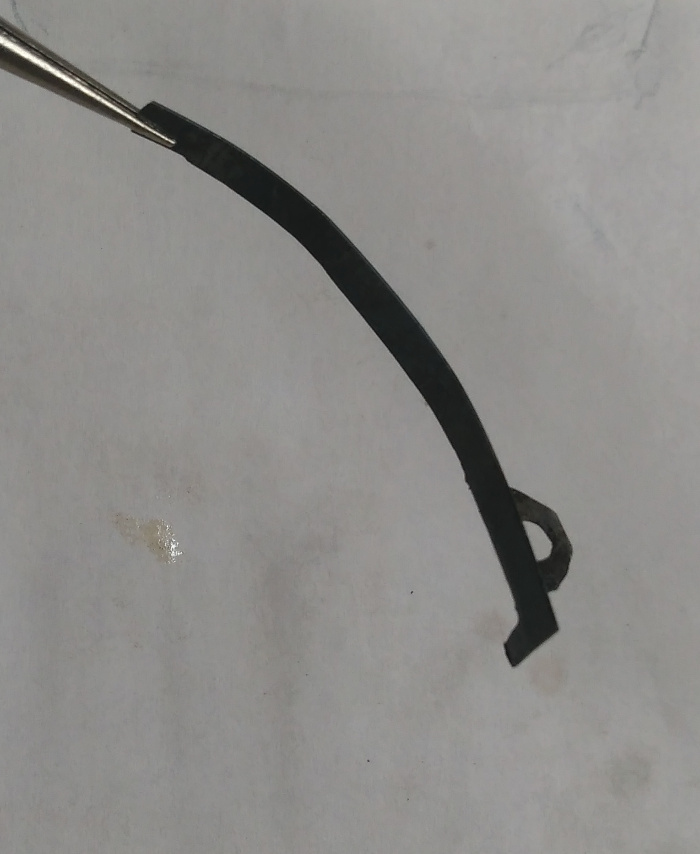
The spring in situ.

And a closer look.

